A question I get asked quite a bit, is how to glaze furniture? Often after a Painting 101 class, people want to know how to take their furniture to the next level. Well, my friends, one of the ways to do it is with glaze.
Dark wax became a really popular way to make a piece look authentically antique, but I’d argue that a water based glaze is easier to work with than dark wax, and leaves you options in the future of painting over it a lot easier!
Today I have for you a basic tutorial on how to glaze painted furniture. I gave the little demo on this antique table, it has a lot of details and a lot of wood grain, so the glaze really settles into all of those areas, making it a good candidate for this finish.
This post contains affiliate links to help you find the products I use and love. Using any of these links pays me a small commission, to see my full disclosure policy, click here.
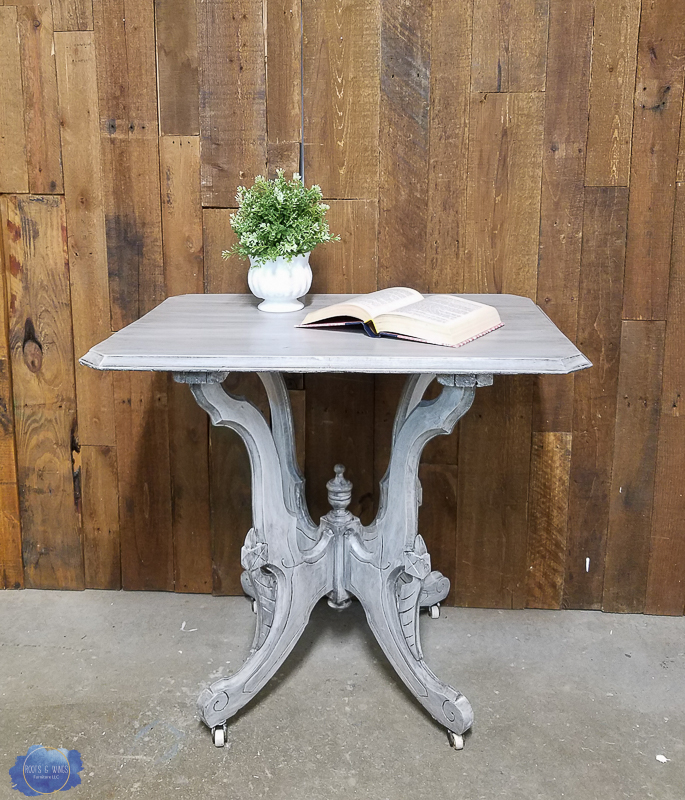
Before we dive in, a few things are important to know.
*This piece was painted to start with 2 coats of General Finishes Antique White Milk Paint. You can see a basic furniture painting tutorial here.
*General Finishes Milk Paint has some sheen to it – meaning the glaze is able to move around on the piece and not be immediately absorbed by the paint. If you are using chalk paint, you MUST seal it first before applying glaze. Otherwise you won’t be able to work the glaze to your liking.
Supplies for Glazing Furniture:
- General Finishes Glaze Effects
- Spray Bottle with Water (these mister bottles are really handy)
- Chip Brush – or other brush
- Krud Kutter
- Rag or old t-shirt
- Gloves
When you first apply the glaze, it truly looks like a mess. This is why people are so afraid to use it. Don’t worry – keep going. The contrast on this piece is also pretty extreme – with the Antique White and the Pitch Black glaze.
Some other examples of glazed pieces that aren’t so contrasting, are this Queenstown Gray Glazed Dresser (one of my all time favorite makeovers), this Persimmon Desk makeover, and this Green and Pallet Dresser with Van Dyke Brown Glaze.
The biggest key is to keep the glaze wet as you are working with it. You can use a spray bottle, or a damp rag/cloth to move it around a bit more.
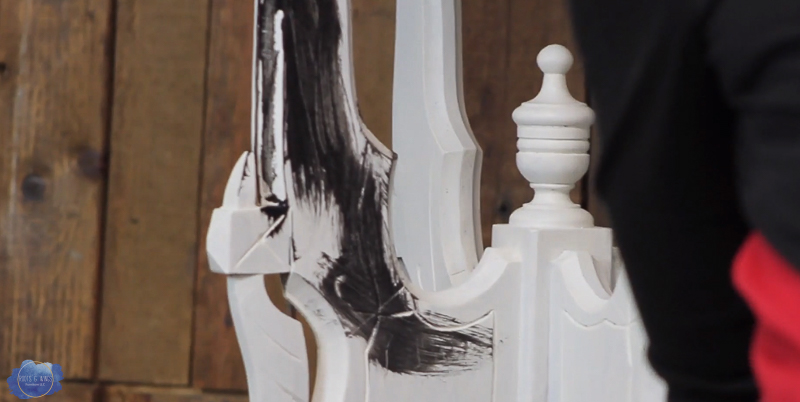
Just keep working it until you are happy with the result. If you “mess up” or find a spot you don’t like – use Krud Kutter to remove the glaze and lighten it back to the original paint. Remember, because this is all water based products, if you finished and truly didn’t like it, you can always let it dry and paint over it.
Flat surfaces I think are the hardest to make look even without being streaky. Again, just keep working with it – this table in particular had some grain to the top, and the glaze really stuck in those places. I think it looks pretty neat!
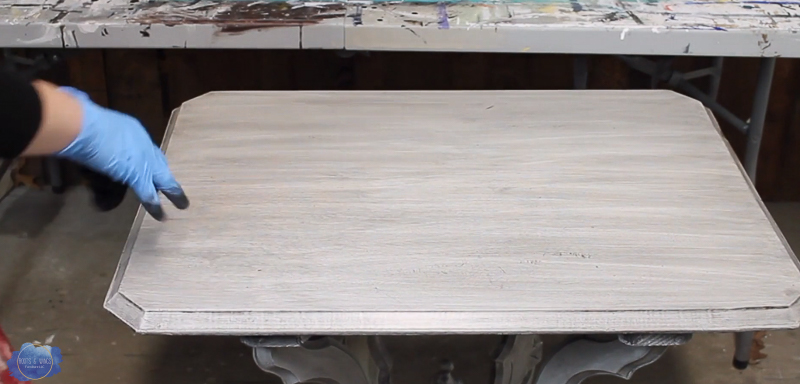
General Finishes Glaze Effects should be sealed with a topcoat. I used High Performance Topcoat in flat finish for the top of this table. Because I wasn’t really too worried about the legs, those didn’t get a topcoat.
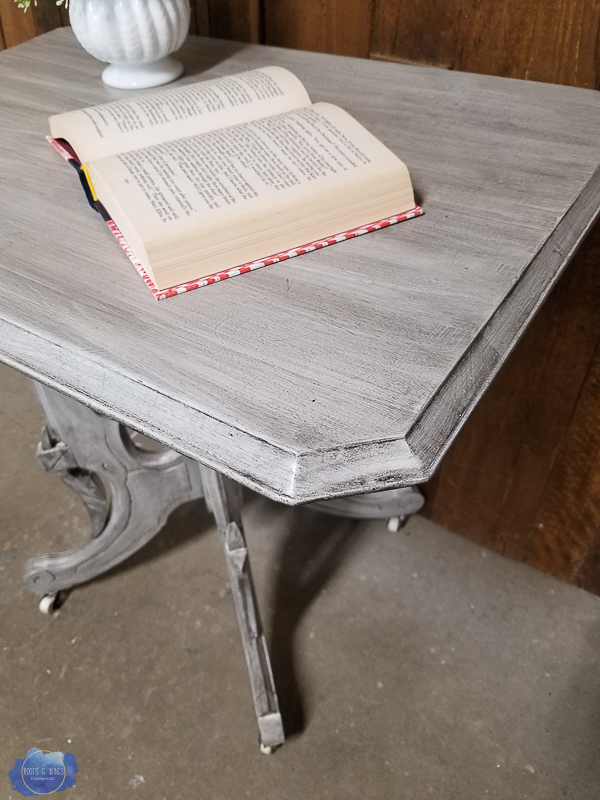
What a unique little table this turned out to be. This all over glaze finish was fun to do, and I hope it gives you some confidence the next time you’d like to add a additional layer to your painted furniture.
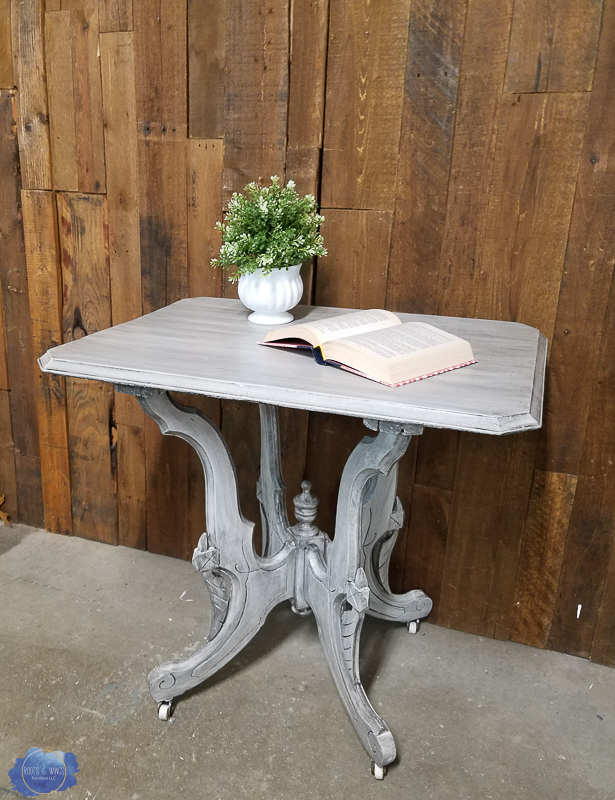
Until next time, keep creating!!
Jenni


